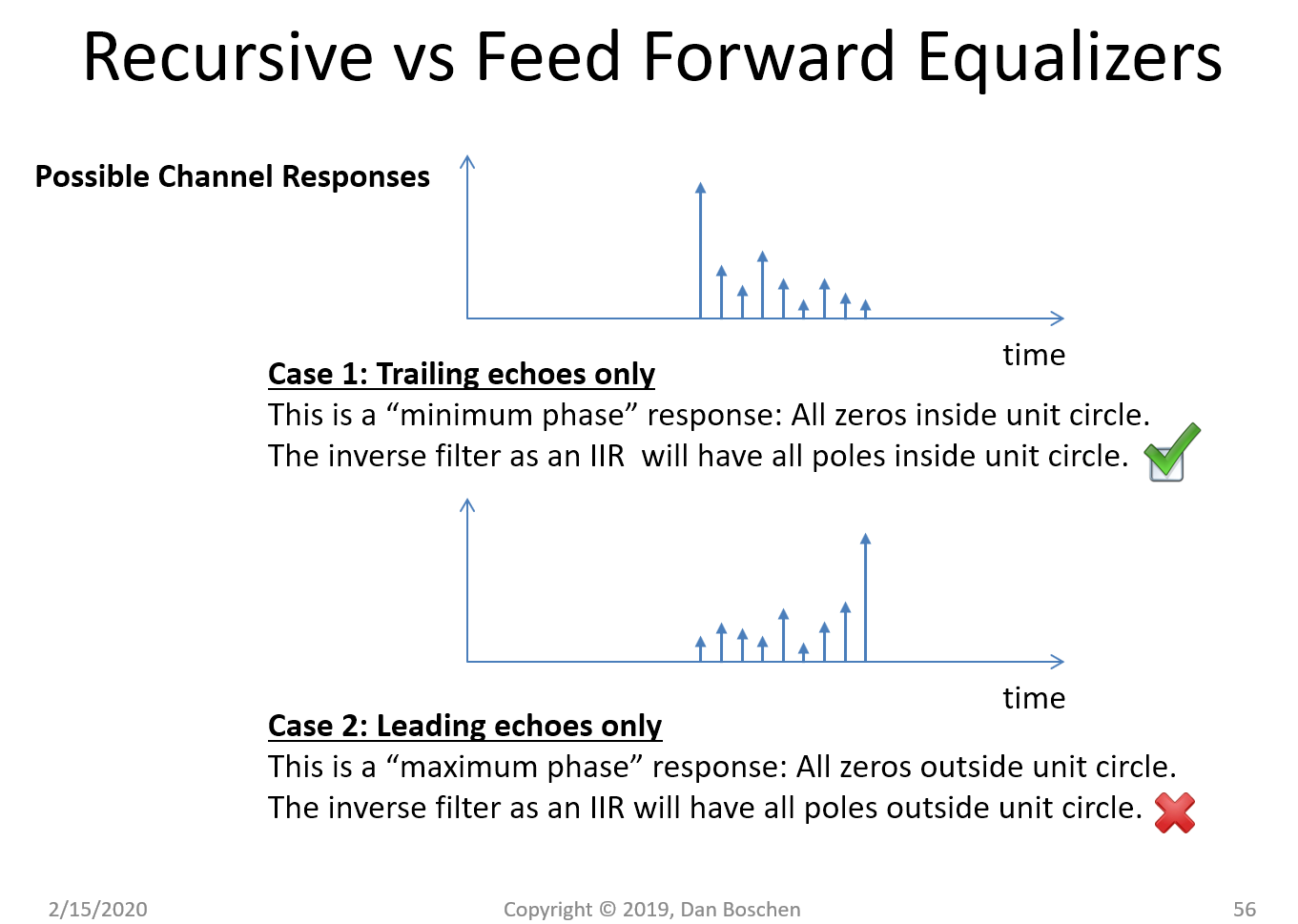I have the following equalization problem as shown in the figure below:
Now I can compute the coefficients for my adaptive FIR filter c (dim(c) = N) the following:
$\mathbf{c_{opt}} = (\mathbf{H}^T\mathbf{H})^{-1}\mathbf{H}~\mathbf{h_{ideal}}$
where $\mathbf{H}$ is a convolution matrix with shifted vectors of $\mathbf{h}$ and $\mathbf{h_{ideal}}$ is chosen such that $x[n]=d[n]$ (delay-free equalizer).
The channel impulse response is given as
$\mathbf{h} = [1, 0.5]^T$
$\Rightarrow H(z) = 1+0.5 z^{-1}$ so the inverse of the system would be IIR:
$1/H(z) = \frac{z}{z+0.5}$
Now the question is the following: What is the difference between the LS-solution with an adaptive filter and direct inversion of the system? Is it just that one filter is FIR and the other one IIR? Therefore with the FIR-filter we cannot reach full equalization and a residual error stays?



